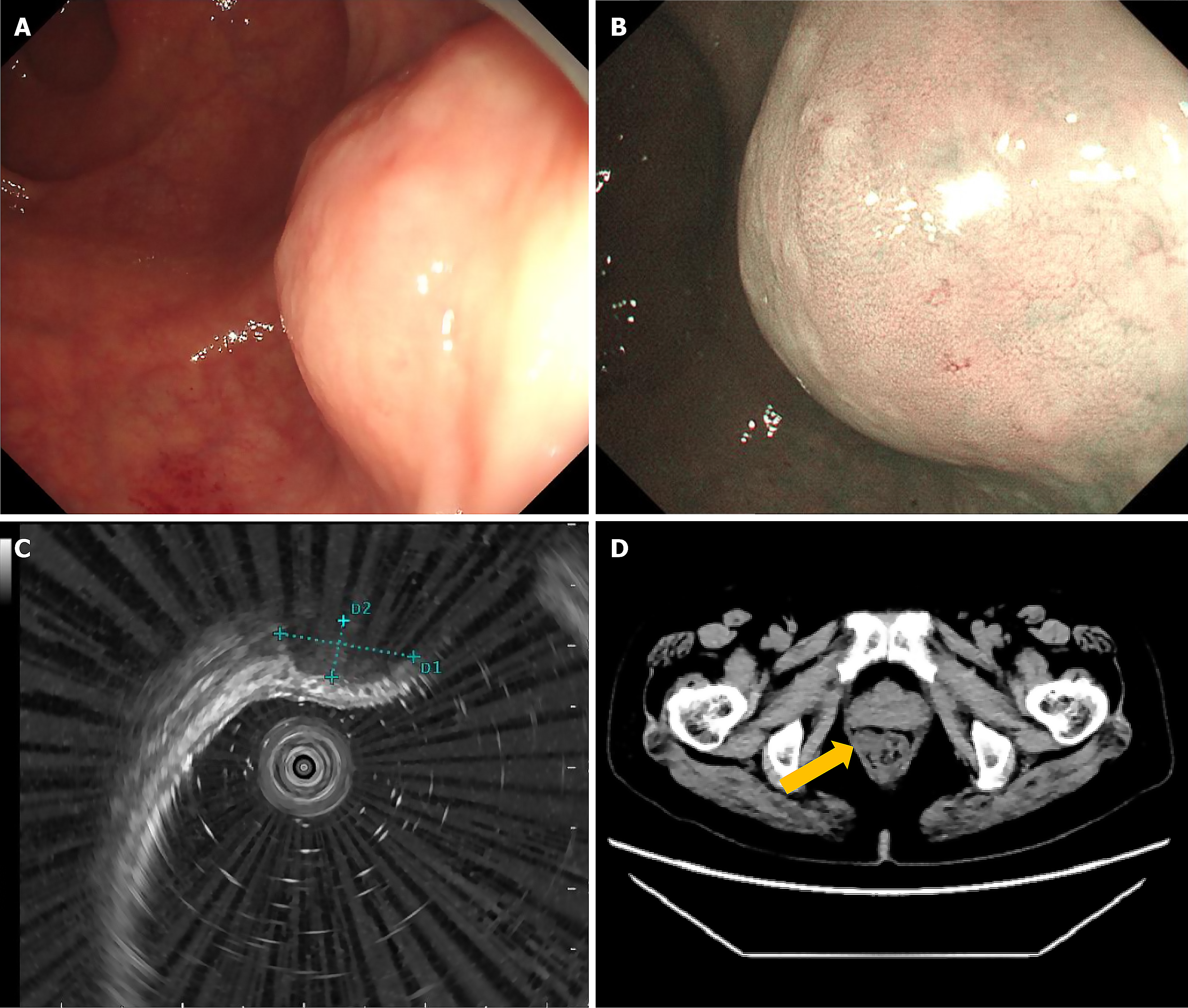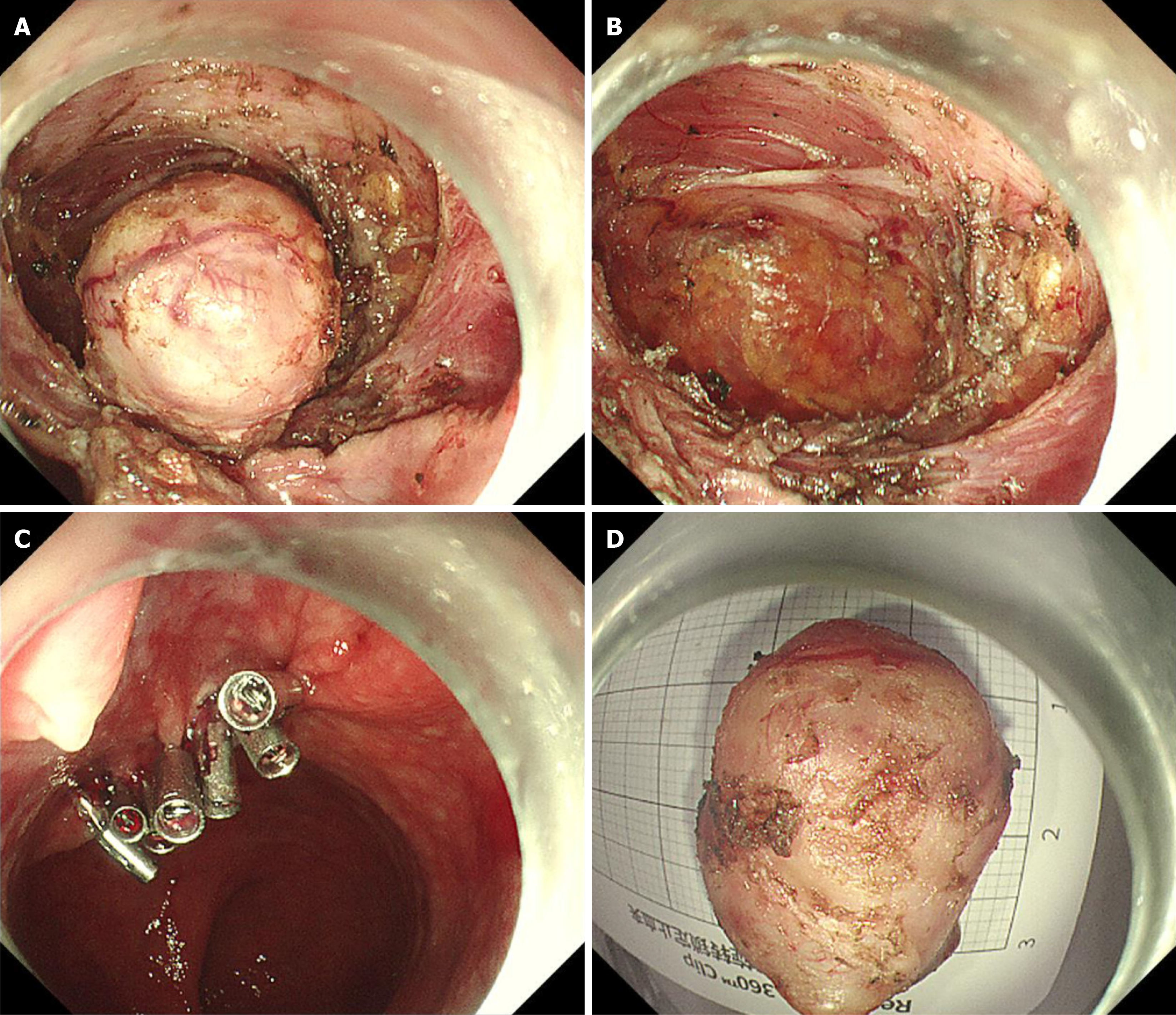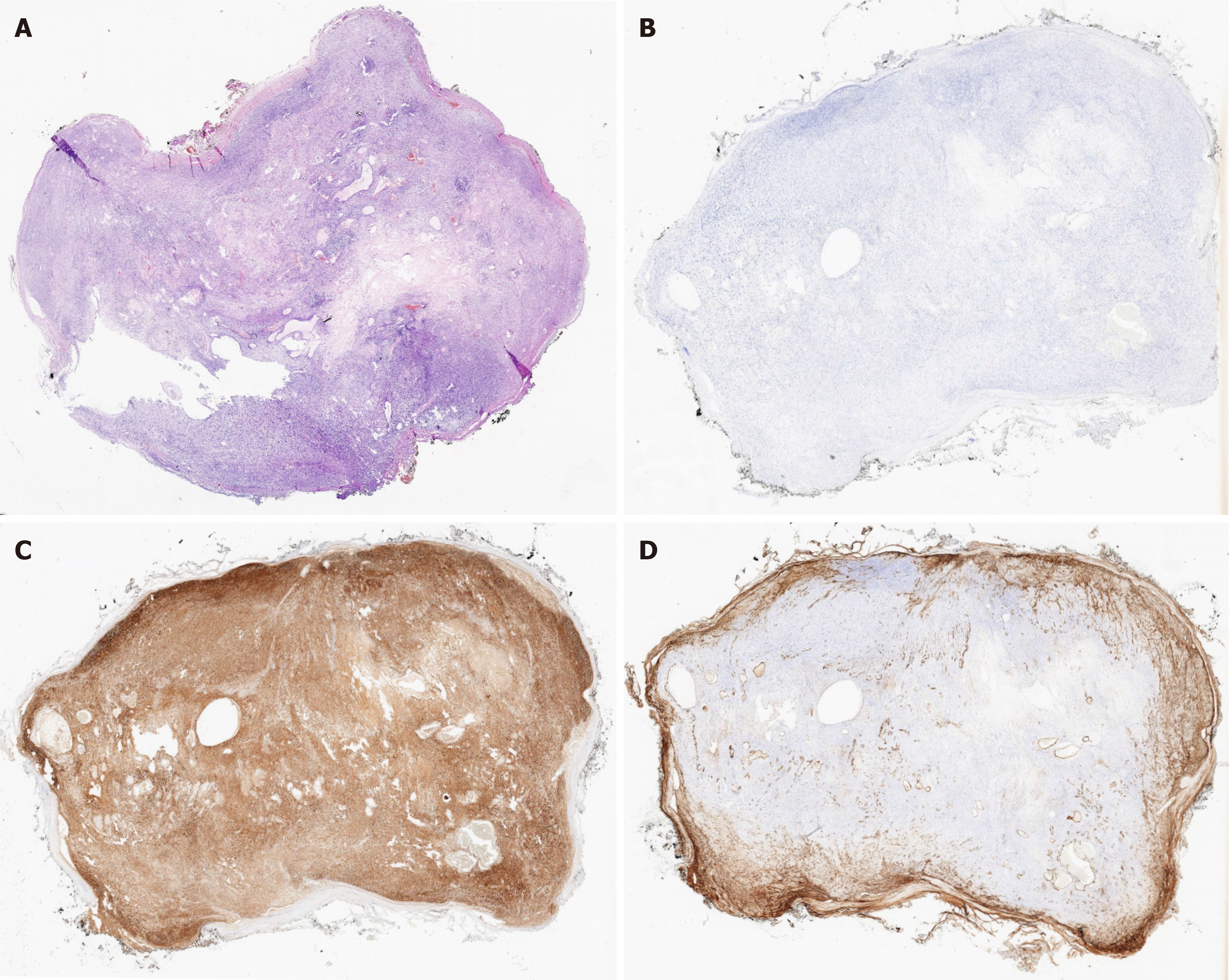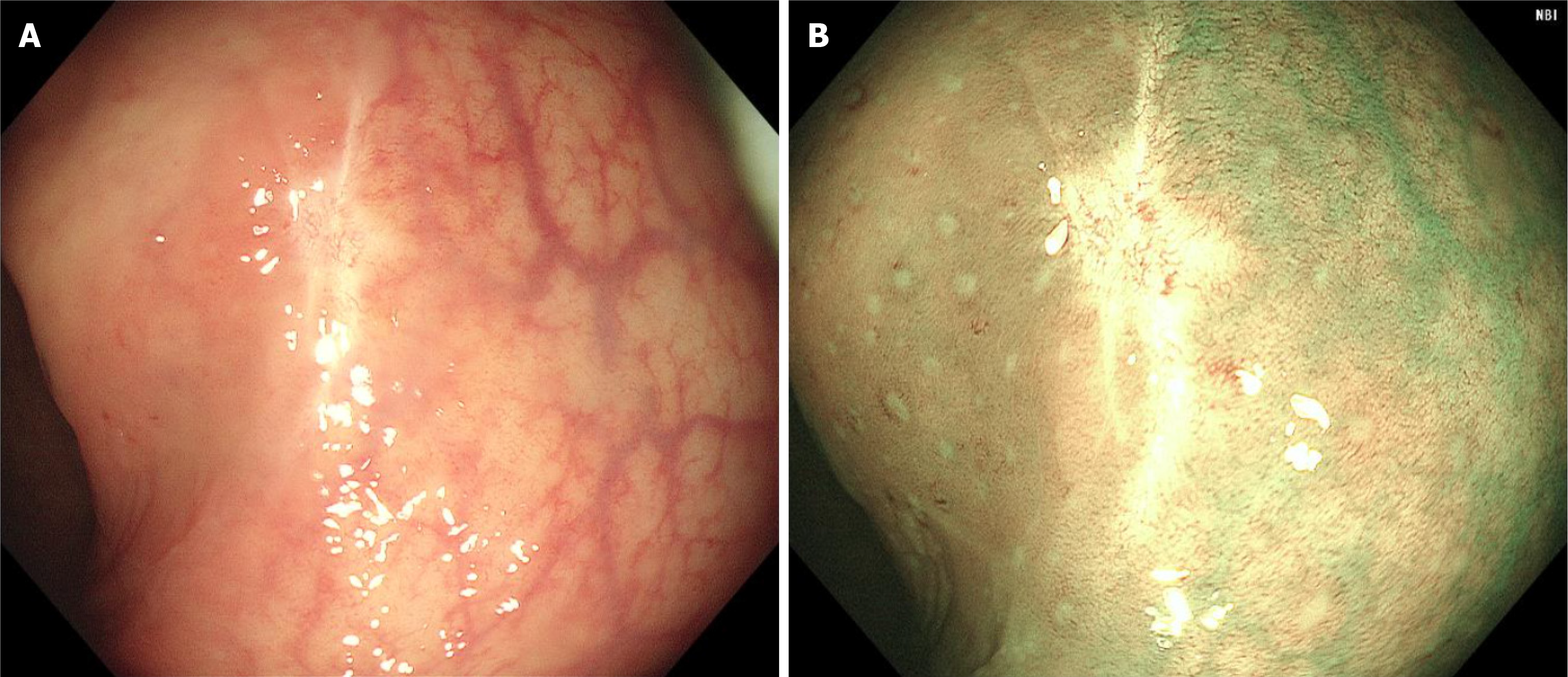Copyright
©The Author(s) 2025.
World J Gastrointest Endosc. Feb 16, 2025; 17(2): 102075
Published online Feb 16, 2025. doi: 10.4253/wjge.v17.i2.102075
Published online Feb 16, 2025. doi: 10.4253/wjge.v17.i2.102075
Figure 1 Colonoscopy and abdominopelvic computed tomography.
A: White light endoscopy; B: Narrow band imaging; C: Endoscopic ultrasonography (a small probe at 20 Hz) showing a hypoechoic mass originating from the muscularis propria with clear boundary; D: A well-circumscribed, well-enhanced, round-shaped mass was identified at the rectum; the main growth pattern was extraluminal growth (yellow arrow).
Figure 2 Endoscopic full-thickness resection and postoperative tumor.
A: Stripping the submucous tumor during endoscopic full-thickness resection (EFTR); B: The wound surface after EFTR; C: Titanium clips were used to seal the wound surface after EFTR; D: An approximately 2.0 cm × 1.5 cm × 1.5 cm round mass was observed after EFTR, which was a solid mass with intact capsule.
Figure 3 Hematoxylin and eosin and immunohistochemical staining.
A: The tumor cells were composed of spindle cells with low nuclear atypia; B: The Ki-67 proliferative index was 3%; C: The tumor was positive for S100; D: The tumor was positive for SOX-100.
Figure 4 Follow-up surveillance colonoscopy.
A: White light endoscopy; B: Narrow band imaging.
- Citation: Zhang YJ, Yuan MX, Wen W, Jian Y, Zhang CM, Yuan J, He L. Endoscopic full-thickness resection of rectal schwannoma: A case report. World J Gastrointest Endosc 2025; 17(2): 102075
- URL: https://www.wjgnet.com/1948-5190/full/v17/i2/102075.htm
- DOI: https://dx.doi.org/10.4253/wjge.v17.i2.102075












